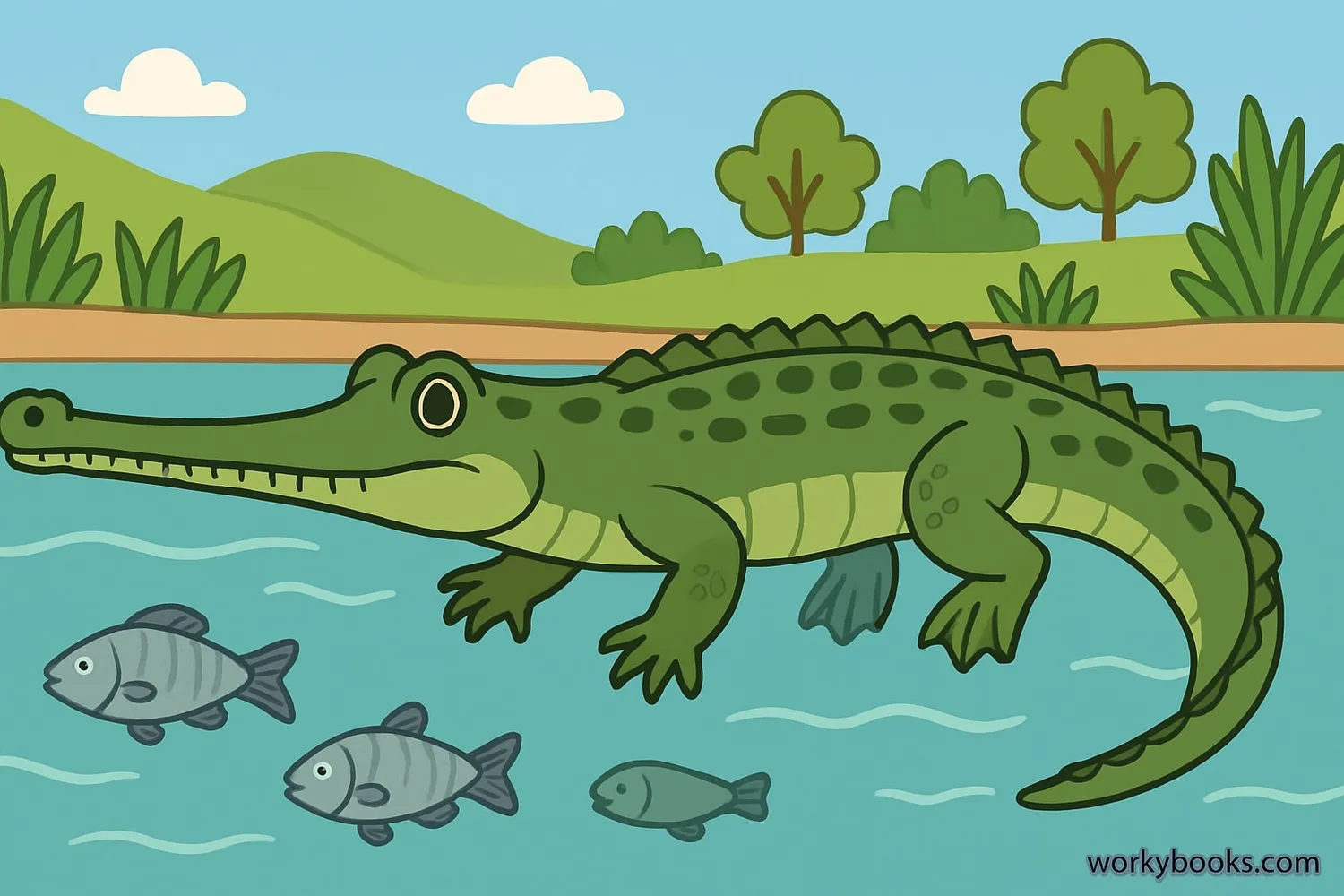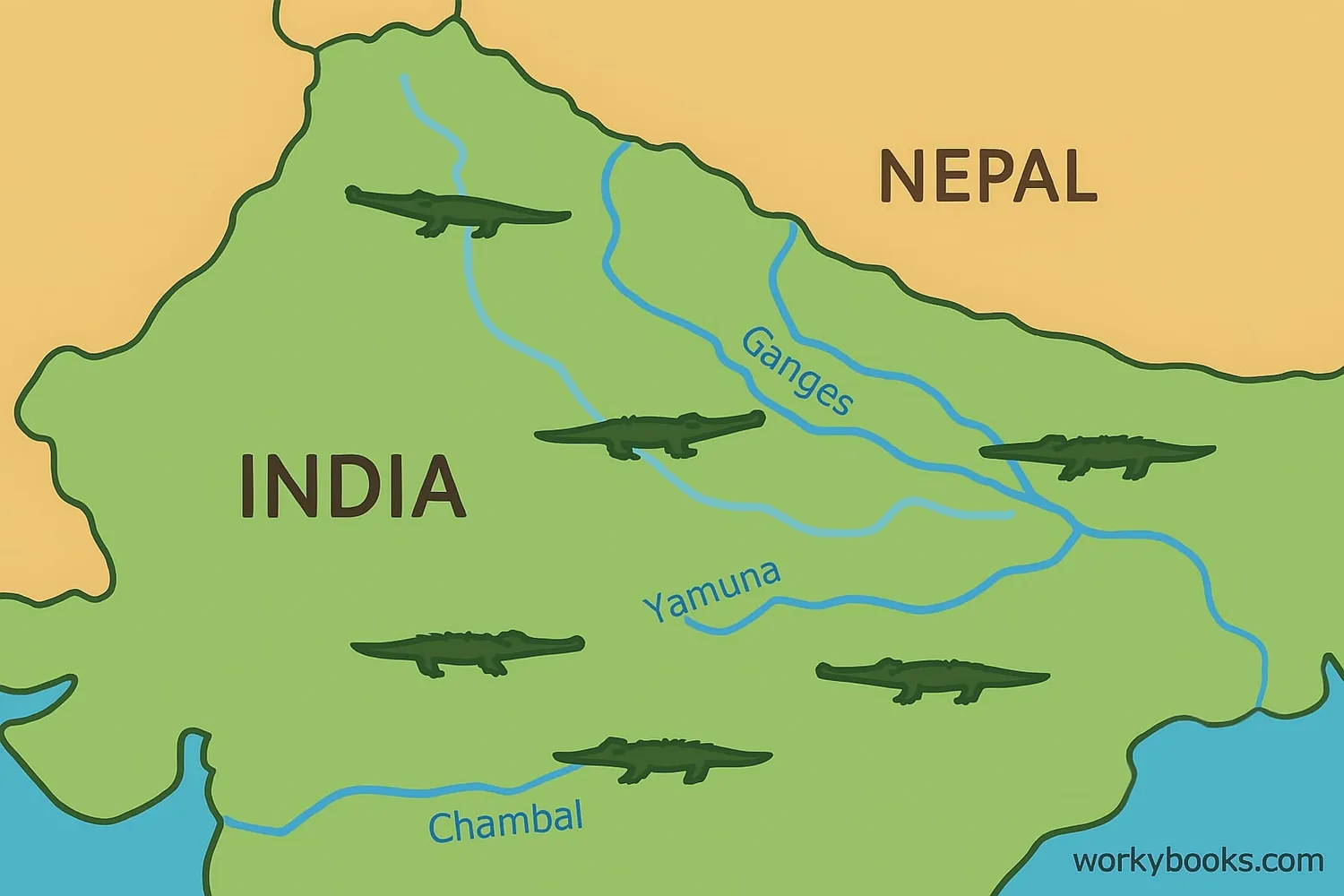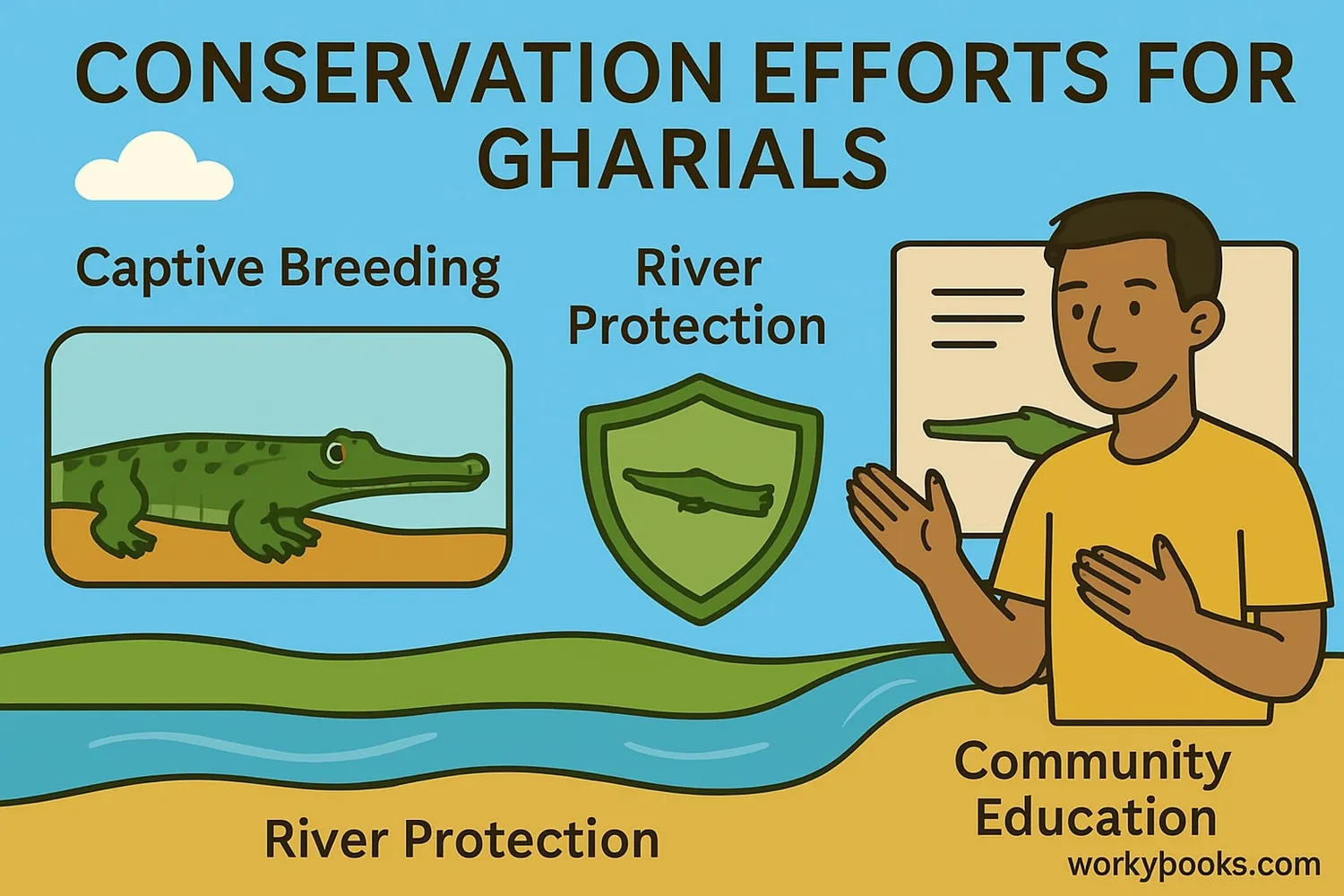Gharial - Definition, Examples, Quiz, FAQ, Trivia
Discover this unique crocodile with a long, narrow snout and learn why it's critically endangered
What is a Gharial?

The gharial (pronounced GAIR-ee-ul) is a special type of crocodile found in rivers of northern India and Nepal. Unlike other crocodiles, gharials have an extremely long, thin snout filled with sharp teeth - perfect for catching fish! These amazing creatures are one of the largest crocodile species, with males growing up to 6 meters (20 feet) long.
Name Origin
The name "gharial" comes from the Hindi word "ghara," meaning pot, referring to the bulbous growth on the end of adult males' snouts.
Gharials are ancient reptiles that have lived on Earth for millions of years. They're perfectly adapted to life in rivers with their streamlined bodies and webbed feet. Sadly, they are now critically endangered with fewer than 1,000 remaining in the wild. Learning about these special creatures is the first step in helping protect them!
Unique Appearance

The gharial has one of the most distinctive appearances of any crocodile species. Here's what makes them special:
Gharial Snout

Other Crocodile Snouts

Extra-Long Snout
Can be 5 times longer than its width at the base
Sharp Teeth
110+ interlocking teeth perfect for catching slippery fish
Bulbous Growth
Adult males develop a bulbous growth called a "ghara" on their snout tip
Webbed Feet
Strongly webbed hind feet for powerful swimming
Body Size
Males can grow up to 6 meters (20 feet) long
The gharial's snout is its most remarkable feature. While it looks fragile, it's actually very strong. The thin shape creates less water resistance when snapping sideways to catch fish. Their teeth are perfectly designed to grip slippery fish without crushing them.
Habitat & Behavior

Gharials are perfectly adapted to life in fast-flowing rivers. Here's where they live and how they behave:
River Habitat
Found in deep, fast-flowing rivers in northern India and Nepal
Fish Diet
Primarily eat fish using their specialized snout
Basking Behavior
Spend hours sunbathing on sandbanks to regulate body temperature
Gharials are social creatures that live in groups called congregations. Unlike other crocodiles, they have relatively weak legs and spend most of their time in water. They're excellent swimmers but move awkwardly on land. During breeding season (March-April), females lay 20-95 eggs in sandy riverbanks.
Habitat Loss
River damming, sand mining, and pollution have destroyed much of the gharial's natural habitat. This is one reason they're critically endangered.
Conservation Status

Gharials are classified as Critically Endangered by the International Union for Conservation of Nature (IUCN). Their population has declined by over 90% since the 1940s. Conservation efforts are crucial to prevent their extinction.
Habitat Loss
Dams, irrigation canals, and sand mining destroy nesting sites
Fishing Nets
Accidental drowning in fishing nets is a major threat
Pollution
River pollution affects their food sources and health
Overfishing
Reduction in fish populations means less food
Protection Efforts
Several conservation programs are working to save gharials:
- Captive breeding: Releasing young gharials into protected rivers
- Protected areas: Establishing gharial sanctuaries in India and Nepal
- Community education: Teaching local communities about gharial protection
- Fishing regulations: Restricting dangerous fishing practices
You can help gharials by learning about them, supporting conservation organizations, and spreading awareness about these unique creatures. Every effort counts in protecting these ancient reptiles for future generations!
Gharial Quiz
Test your knowledge about gharials with this quiz! Answer all 5 questions to see how much you've learned.
Frequently Asked Questions
Here are answers to common questions about gharials:
Gharial Trivia
Discover fascinating facts about these unique crocodiles!
Size Matters
Male gharials are among the longest of all living crocodilians, with some individuals measuring over 6 meters (20 feet) from snout to tail!
Speedy Snappers
Gharials have the fastest strike of any crocodilian! Their specialized snout allows them to snap sideways at incredible speeds to catch fish.
Ancient Lineage
Gharials have existed for over 50 million years. Fossils show that their distinctive snout shape has remained largely unchanged since prehistoric times.
Unique Communication
The bulbous "ghara" on males' snouts acts as a sound resonator. When they buzz, it creates bubbles in the water that may attract females or warn rivals.


